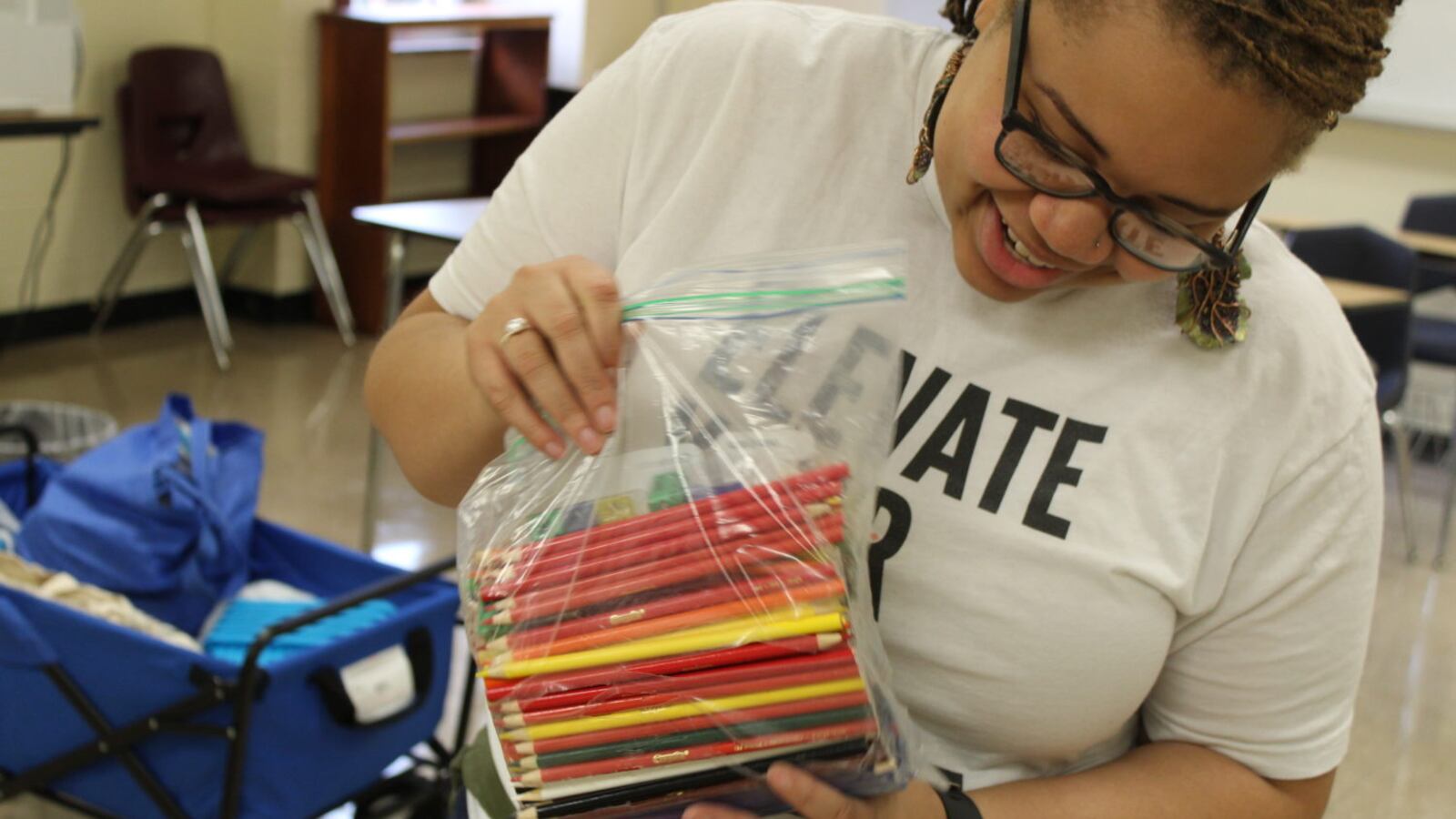When teacher Shemena Shivers walked into her Melrose High School science lab for the first time, she couldn’t contain her excitement at the closet full of equipment and supplies. But after a closer look revealed long-expired solutions and outdated texts, she realized that she would need to spend hundreds of dollars out of pocket just to provide her students a basic science education.
So, she did what many of her fellow teachers have done: She turned to Facebook for help. She created a video of her classroom, issued a heartfelt online plea and posted a link to her supplies campaign on MTR Give, a fundraising site run by the teacher-training program she had attended.
Across the country, most teachers don’t get anywhere near enough to equip their classrooms and keep them running. So they spend their own money, they clip coupons and check out bargain aisles and, increasingly, take their requests online. With school set to open Monday, Memphis teachers are scrambling to stay within budget.
Shivers was lucky, because her teaching training program already had a fundraising site set up. In June, she set a $1,600 goal, which she reached in a month. She can now cover basic classroom supplies, like composition notebooks, index cards, and markers and crayons for her 160 students, many of whom can’t afford their own. It won’t pay for science supplies or experiments, but she’s got much more than what the $200 district supply stipend would cover.
“I want to have posters. I want to have, you know, encouraging sayings, mantras to live by, hung up in my class for my kids to see,” she said. “But I can’t give them homework if I don’t have paper.”
According to a U.S. Department of Education report, 94 percent of public school teachers paid for classroom supplies out of their own pockets in 2014-2015. Teachers in urban schools on average spent $526, more than what rural or suburban teachers did. First-time teachers like Shivers are bound to spend more on initial expenses.
To soften that blow, many teachers visit sites like GoFundMe and DonorsChoose to ask their followers to donate to their classrooms. In the past decade, more organizations have adopted this practice, called crowdsourcing, to support teachers and schools.
In 2009, Vincent McCaskill, then a Memphis City Schools employee, saw a need in a district that he said was trying to “patch up budget holes” instead of making strategic investments in students. So, he started SchoolSeed, a Memphis-based independent fund for local classrooms.
It created a crowdsourcing platform, which in two years has generated about $470,000 for various school projects proposed by teachers, like courtyard gardens and library restorations. The site posts district-approved projects, which reap 90 percent of the dollars donated to them.
McCaskill said web platforms offer a means to invest directly in students, whether it’s for a lab experiment or a cozy space to to read.
“While to some people that might not seem like something major, to that teacher it’s very important,” he said. “When those projects are funded, and the teachers are able to do what they set out to do, it’s going to plant a seed.”
Planting the seed
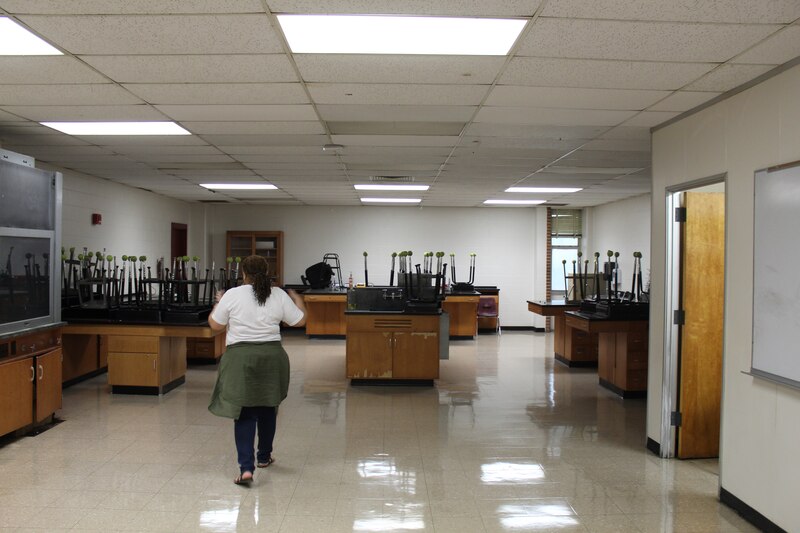
Melrose High School, located in Memphis’ historic Orange Mound community, has the highest poverty rate in the district. According to the state report card, over one-fourth of Melrose’s students don’t graduate, and of those who do, less than 1 percent are considered college- ready, based on ACT test scores.
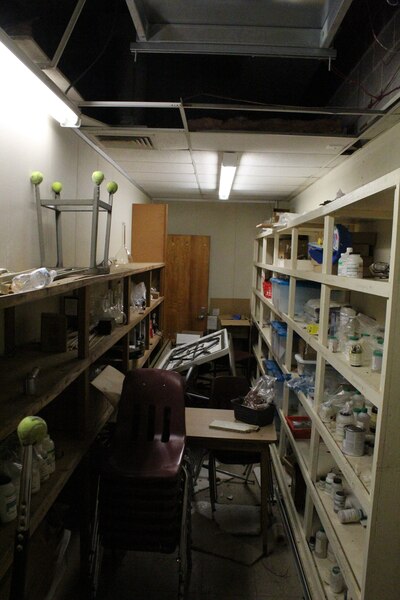
Its ’70s-era building isn’t inspiring, Shivers said.
As she browsed the lab’s closet, she realized she’d have to throw out the buffer solution that had expired 20 years ago. The test packets from 2014 wouldn’t prepare her students for the new science standards. And she didn’t know what to do with the two plastic bags of preserved piglets – stacked on top of each other in a broken plastic crate – except to laugh about it.
“It’s not until people actually see the conditions that you’re working with that, sadly, that’s when people respond,” Shivers said.
With the help of 38 donors, Shivers reached her goal and feels fortunate. But she noted that finding success through crowdfunding is largely dependent on who makes up a user’s network.
“I don’t necessarily think it’s because they just have so many amazing friends and I don’t, I think the demographics of their friends or networks look different,” she said.
Instead of banking on a couple of hefty donations, Shivers said her sphere of Facebook followers were more likely to give small amounts when they could, which meant she had to be persistent in her posts. But that can be hard for some teachers, who may not feel comfortable posting online.

Shivers’ classmate Victoria Cummings noted in her first post that she’d been fairly quiet on social media until it came time to ask for classroom donations.
But, like Shivers, Cummings kept posting requests until the last day of the monthlong campaign. “I’m jumping out of my seat because I’m ecstatic!” she wrote, crediting the “village” of 21 donors that helped her reach her goal of $730.
With that donation, Cummings said she could make do. She could repurpose what other teachers had given her, and that she wasn’t too concerned about “trying to be the most decorative person.” Instead, she’d focus on buying the essentials, like a classroom pencil sharpener and books.
Crowdfunding requires an investment in time and effort. Some teachers spent days researching what they’d need and asking the advice of their veteran colleagues.
“Add this to your list,” was a common conversation starter among the group, said Karen Wong, who teaches at Treadwell Elementary.
While a resident, Wong’s mentor gave her tips on what she’d need to buy her first year, like pencils, erasers, and crayons. But she was surprised to find that the classroom also lacked books or basic storage units.
Chelsea Mullins Rachiele teaches math at MLK Prep, where she gets about $75 in gift cards for a teacher supply store.
“I came in hearing that I’d get a little bit of money, but knowing that it wouldn’t go very far,” she said. So she came up with a goal – $1,600 – and prioritized sets of math manipulatives for hands-on lessons and a standing desk to keep her students from falling asleep.
She reached her goal with 13 donations, which covered the basics but not her lower priorities, like an iPad that would keep her from being “tied to her desk” and an extra whiteboard for demonstrating problems.
Making do
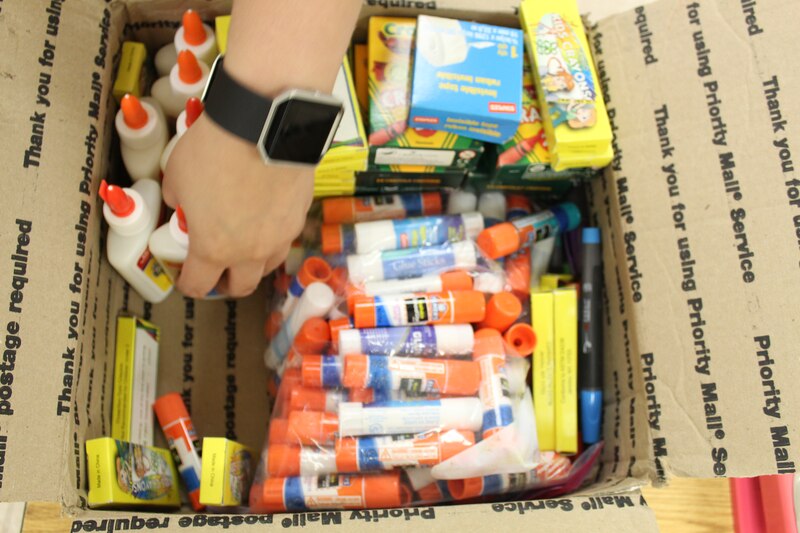
Like many teachers, Shivers gets hand-me-down donations. As she thumbed through two boxes of colored pencils, scissors, and paper that a teacher friend in Arizona sent her recently, she smiled.
“Aww! She sorted them by color!” Shivers said. It would be enough to fill a few baskets so her students could work in groups.
Shivers said she’ll save about $300 of her donations for some lab projects. For her science students, doing, rather than just reading is important.
For the first week of school, she plans to create a gallery walk to teach the characteristics of life. Ideally, she’d like to have students observe some living organisms alongside non-living things, but she probably can only afford to print some pictures instead, she said.
“Who just has living things readily available?” she said. “Not I.”
Shivers has other plans, too. One of them is to transform her lab into an ecosystem at the end of the semester. But her funds will probably run out by then, she said, in resignation.
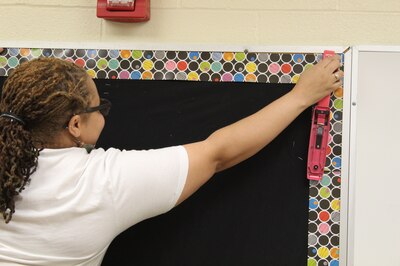
“As much as I love my kids,” she said, “we’re not making that much money to constantly be feeding our classrooms. So you kind of make do with what you have.”
Even after meeting their crowdsourcing goals, the teachers often search for additional ways to save.
In college, Rachel Mohr, a history teacher at Lester Prep, worked with a teacher who used glossy plastic plates for whiteboards – they were disposable, and much cheaper, she said. Now, Mohr follows her lead, using a free website to make DIY signs for her room.
Wong uses another site, called Classroom Dojo, to ask parents to donate to projects throughout the year, or if she wants to have a party for her students. And her peers have scoured yard sales, thrift stores, and teacher chat rooms to hunt for bargains.
Shivers said she practically “lived at the printer” while completing her residency at Kingsbury Middle School. That’s because there weren’t enough books for her students to take home, so she’d just make copies if they had an assignment.
She remembers watching her mentor demonstrate science experiments – like the ones she plans to do this year – in front of his students, telling them to take notes. That’s because there weren’t enough supplies for them to try for themselves.
Shivers said some of her colleagues worked multiple jobs, and some wrote grants to fund class projects. And while she admires them for doing so, she said, none of those things – including crowdsourcing – should be necessary.
“I don’t know where that disconnect has come in our country where education is kind of just an afterthought,” she said. “You know, as a police officer, you don’t buy your own police unit car. That’s provided for you, your uniform is provided for you, your gun is provided for you. You don’t have to ask somebody for money to do your job.”
How much do you spend on classroom supplies? And where do you go to buy them? Take our survey.

